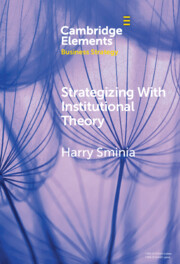Element contents
Strategizing With Institutional Theory
Published online by Cambridge University Press: 21 May 2024
Summary
- Type
- Element
- Information
- Series: Elements in Business StrategyOnline ISBN: 9781009357654Publisher: Cambridge University PressPrint publication: 13 June 2024



